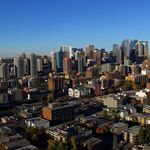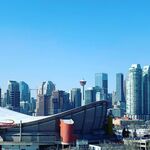InfrastructureEnthusiast
Active Member
It's hard to imagine how HSR works for Banff? How long could you really get up to speed for? That slide indicates it might cut out communities...like Cochrane? Canmore? It almost certainly has to go through the reserve at some point...I'd think having a stop there would be important to the nation... And then once you're into the mountains, how straight of a ROW can they really achieve?
Is it possible they'd use the TC1 median?
I don't think HSR trains running the Banff route would be able to achieve top speeds, but it doesn't really make sense to have a second set of trainsets and standards for that route either. Plus having the high tech train run on the most tourist heavy line is good PR for the province.
I can see a move of the HSR line into HWY1 corridor after Cochrane working well. Not running the tourist oriented train right through the Exshaw mining operation is probably a good idea too..
Nice thing about having its own dedicated tracks is that it should be possible to run some trains as direct express service, airport to Banff non-stop even, while another schedule could have more stops along the way.
Overall an encouraging presentation. The 30 year map seems reasonable. I'd like to see it done in closer to 20, but it sounds like the YEG/EdmDT segment is going to take a lot longer to sort out.. I believe the word the presenter used was "costly"
Wouldn't at all be surprised to see the Banff line running well before the Edmonton route.




